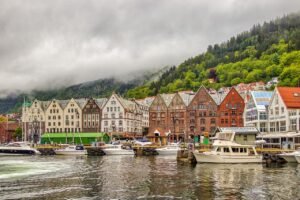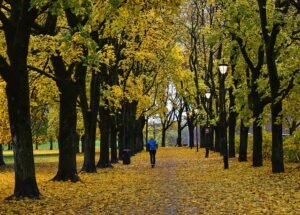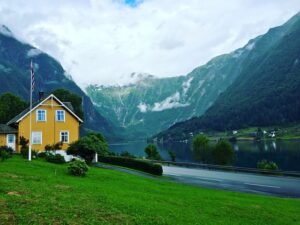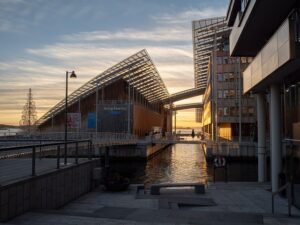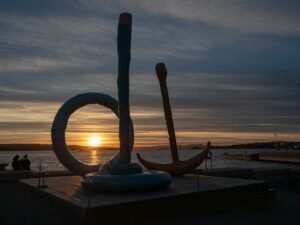
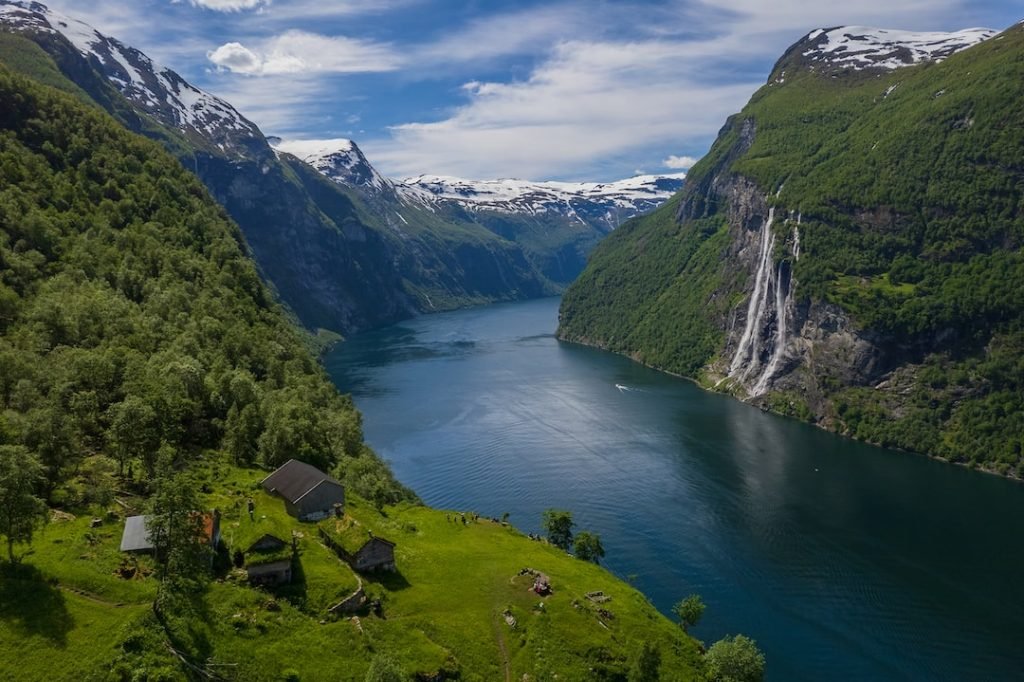
Nature and Outdoor Adventures: Norwegian Language Tips
Norway, known for its stunning landscapes and outdoor adventures, is a country rich in language and culture. The official language of Norway is Norwegian, which is spoken by the majority of the population. Norwegian is a North Germanic language, closely related to Swedish and Danish. While many Norwegians also speak English fluently, learning the Norwegian language can greatly enhance your experience when exploring the country’s natural wonders.
Understanding the Norwegian language and culture is particularly important for outdoor enthusiasts. Norway offers a wide range of outdoor activities, such as hiking, camping, skiing, and fishing. By learning Norwegian, you can communicate with locals, navigate through the wilderness, and fully immerse yourself in the Norwegian way of life.
Table of Contents
ToggleKey Takeaways
- Norwegian language and culture are closely tied to the country’s natural environment and outdoor activities.
- Common Norwegian phrases for outdoor adventures include “god tur” (have a good trip) and “takk for turen” (thanks for the trip).
- Pronunciation tips for Norwegian words include emphasizing the first syllable and rolling the “r” sound.
- Vocabulary for hiking and camping in Norway includes “telt” (tent) and “fjell” (mountain).
- Understanding Norwegian place names and landmarks can provide insight into the country’s history and geography.
Common Norwegian Phrases for Outdoor Adventures
When embarking on outdoor adventures in Norway, it’s helpful to know some basic Norwegian phrases. These phrases will not only help you navigate through the wilderness but also allow you to interact with locals and make your experience more enjoyable.
Some basic phrases for outdoor adventures include greetings such as “Hei” (hello) and “God morgen” (good morning). When asking for directions, you can use phrases like “Hvor er nærmeste tursti?” (Where is the nearest hiking trail?) or “Kan du hjelpe meg å finne veien?” (Can you help me find my way?).
In emergency situations, it’s important to know how to ask for help. Phrases like “Jeg trenger hjelp” (I need help) and “Ring ambulanse” (Call an ambulance) can be lifesaving. It’s also useful to know how to say basic medical terms such as “Sår” (wound) and “Brannskade” (burn).
Pronunciation Tips for Norwegian Words
Norwegian pronunciation can be challenging for non-native speakers, but with some practice, it can be mastered. Norwegian has a relatively straightforward pronunciation system, with consistent rules for vowel and consonant sounds.
One important rule to remember is that Norwegian vowels are generally pronounced more clearly than in English. For example, the letter “a” is pronounced as “ah” in words like “fjord” and “barn”. The letter “e” is pronounced as a short “eh” sound in words like “fjell” and “hjem”.
Some commonly mispronounced words in Norwegian include “skjønnhet” (beauty), which is often mispronounced as “skjønn-het”, and “fjord”, which is often mispronounced as “f-yord”. It’s important to pay attention to the correct pronunciation of these words to ensure effective communication.
Vocabulary for Hiking and Camping in Norway
| Term | Definition |
|---|---|
| Allemannsrett | The right to roam freely in nature, including camping and hiking, as long as you respect the environment and private property. |
| DNT | The Norwegian Trekking Association, which maintains over 500 cabins and 22,000 km of hiking trails throughout Norway. |
| Fjell | The Norwegian word for mountain, often used to describe the rugged terrain found in Norway’s national parks. |
| Hytte | A cabin or lodge, often owned by DNT, where hikers can stay overnight during their trek. |
| Jotunheimen | A national park in central Norway known for its high peaks and glaciers, including Galdhøpiggen, the highest mountain in Norway. |
| Kvikklunsj | A popular Norwegian chocolate bar often eaten by hikers as a snack. |
| Løype | A marked trail or path, often maintained by DNT, that hikers can follow through the wilderness. |
| Nordmarka | A forested area just outside of Oslo with many hiking trails and cabins. |
| Rondane | A national park in eastern Norway known for its rounded peaks and alpine tundra. |
| Turistforeningen | The Norwegian name for DNT, which translates to “The Tourist Association.” |
When hiking and camping in Norway, it’s helpful to know the vocabulary related to different types of terrain and landscapes. This will allow you to better understand your surroundings and navigate through the wilderness.
Some words for different types of terrain include “fjell” (mountain), “skog” (forest), and “elv” (river). Knowing these words will help you identify the type of landscape you are in and plan your outdoor activities accordingly.
Vocabulary related to camping equipment and supplies is also important. Words like “telt” (tent), “sovepose” (sleeping bag), and “stormkjøkken” (camping stove) will come in handy when setting up your campsite. It’s also useful to know words for food items such as “mat” (food) and “vann” (water) to ensure you have everything you need for your outdoor adventure.
Understanding Norwegian Place Names and Landmarks
Norwegian place names often have interesting meanings and can provide insights into the country’s history and culture. Understanding the conventions behind Norwegian place names can enhance your appreciation of the landmarks you encounter during your outdoor adventures.
In Norway, many place names are descriptive and often refer to the physical characteristics of the area. For example, “fjord” refers to a long, narrow inlet with steep sides or cliffs, while “foss” means waterfall. These descriptive names give you an idea of what to expect when visiting these landmarks.
Famous landmarks in Norway include “Preikestolen” (Pulpit Rock), which is a steep cliff overlooking Lysefjorden, and “Trolltunga” (Troll’s Tongue), which is a rock formation jutting out horizontally above Ringedalsvatnet lake. These landmarks are not only breathtaking but also have fascinating names that reflect Norwegian folklore and mythology.
Norwegian Weather Terminology for Outdoor Enthusiasts
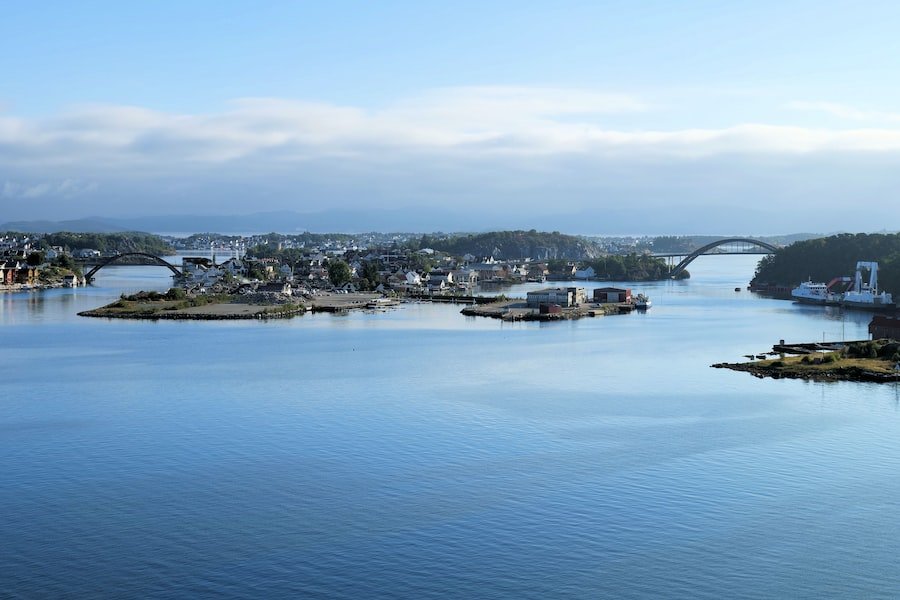
Norwegian weather can be unpredictable, especially in mountainous regions. As an outdoor enthusiast, it’s important to be prepared for different weather conditions and understand the terminology used to describe them.
Some words for different types of weather conditions include “sol” (sun), “regn” (rain), “snø” (snow), and “tåke” (fog). Knowing these words will help you plan your outdoor activities accordingly and ensure you have the appropriate clothing and gear.
Phrases for discussing weather forecasts are also useful. For example, you can ask “Hvordan blir været i morgen?” (What will the weather be like tomorrow?) or say “Det ser ut til å bli dårlig vær i dag” (It looks like it will be bad weather today). Being able to understand and discuss weather forecasts will help you make informed decisions about your outdoor adventures.
Norwegian Wildlife Vocabulary for Nature Lovers
Norway is home to a diverse range of wildlife, and being able to identify and understand the vocabulary related to animals and birds can enhance your outdoor experience.
Some words for different types of animals include “elg” (moose), “rev” (fox), and “hjort” (deer). Knowing these words will allow you to identify the animals you encounter during your hikes or camping trips.
Vocabulary for identifying animal tracks and signs is also important. Words like “spor” (tracks), “avføring” (feces), and “hi” (den) can help you identify the presence of animals in the area. This knowledge can add an extra layer of excitement and curiosity to your outdoor adventures.
Norwegian Outdoor Activities and Sports Vocabulary
Norway is a paradise for outdoor enthusiasts, offering a wide range of activities and sports. Knowing the vocabulary related to these activities will allow you to fully immerse yourself in the Norwegian outdoor culture.
Words for different types of outdoor activities include “fjelltur” (mountain hike), “skitur” (ski trip), and “fisketur” (fishing trip). Understanding these words will help you plan your adventures and communicate with fellow outdoor enthusiasts.
Vocabulary for equipment and gear is also important. Words like “ski” (skis), “fiskestang” (fishing rod), and “kajakk” (kayak) will come in handy when preparing for your outdoor activities. Being able to discuss equipment and gear will also allow you to seek advice from locals or rental shops.
Norwegian Food and Drink Vocabulary for Outdoor Dining
Exploring Norway’s great outdoors can work up an appetite, and knowing the vocabulary related to traditional Norwegian dishes and ingredients will enhance your dining experience.
Words for traditional Norwegian dishes include “lutefisk” (dried fish soaked in lye), “rakfisk” (fermented fish), and “klippfisk” (dried and salted cod). Understanding these words will allow you to try local delicacies and fully immerse yourself in Norwegian cuisine.
Vocabulary for ordering food and drinks at restaurants is also important. Words like “forrett” (appetizer), “hovedrett” (main course), and “dessert” (dessert) will help you navigate through menus. Knowing how to order drinks such as “øl” (beer) or “vin” (wine) will also enhance your dining experience.
Resources for Learning Norwegian Language and Culture for Outdoor Adventures
If you’re interested in learning the Norwegian language and culture for your outdoor adventures, there are several resources available to help you.
Online courses and language learning apps such as Duolingo and Babbel offer Norwegian language lessons that can be accessed from anywhere with an internet connection. These courses provide interactive lessons, vocabulary exercises, and pronunciation practice to help you improve your language skills.
Norwegian cultural events and festivals are also great opportunities to immerse yourself in the language and culture. Events such as the Bergen International Festival and the Midnight Sun Marathon in Tromsø offer a chance to experience Norwegian traditions, music, and cuisine.
For a more immersive experience, outdoor adventure companies in Norway offer language and culture immersion programs. These programs combine outdoor activities with language lessons, cultural excursions, and interactions with locals. This allows you to learn Norwegian while exploring the country’s natural wonders.
In conclusion, learning the Norwegian language and culture can greatly enhance your outdoor adventures in Norway. By knowing basic phrases, understanding pronunciation rules, and familiarizing yourself with vocabulary related to hiking, camping, wildlife, and more, you can fully immerse yourself in the Norwegian way of life. Whether you choose online courses, cultural events, or immersive programs, there are plenty of resources available to help you on your language and cultural journey. So, get ready to explore the stunning landscapes of Norway and connect with the locals in their own language.
If you want to learn Norwegian, you can register for classes here. If you want to check your Norwegian level for free, you can do that here. We look forward to hearing from you and helping you become fluent in Norwegian!
Refer a friend and get $150. Join the program here
If you want to learn Norwegian, you can register for classes here. We look forward to hearing from you and helping you become fluent in Norwegian.

